- Home
- Lawrence Block
The Burglar Who Painted Like Mondrian Page 5
The Burglar Who Painted Like Mondrian Read online
Page 5
“Now let’s be calm,” I said, to both of them. “No need to talk about violence.”
“If you do not pay ze ransom—”
“Neither of us has that kind of money. You must know that. Now why don’t you tell me what you want?”
There was a pause. “Tell your vriend to go home.”
“I beg your pardon?”
“Zere is somesing in her mailbox.”
“All right. I’ll go with her, and—”
“No.”
“No?”
“Stay vere you are. You vill get a phone call.”
“But—”
There was a click. I sat looking at the receiver for a few seconds before I hung it up. I asked Carolyn if she’d heard any of it.
“I caught a few words here and there,” she said. “It was the same person I talked to last night. At least I think it was. Same accent, anyway.”
“She switched it on in midstream. I guess she forgot it at the beginning, and then she remembered she was supposed to sound threatening. Or else she slips into it when she gets excited. I don’t like the idea of splitting up. She wants you to go to your apartment and me to stay here and I don’t like it.”
“Why?”
“Well, who knows what she’s going to try to pull?”
“I have to go downtown anyway. Somebody’s bringing me a schnauzer at eleven. Shit, I don’t have much time, do I? I can’t face a schnauzer with a head like I’ve got. Thank God it’s a miniature schnauzer. I don’t know what I’d do if I had to wash a giant schnauzer on a day like this.”
“Stop at your apartment on the way. If you’ve got time.”
“I’ll make time. I have to feed Ubi, anyway. You don’t think—”
“What?”
“That they took him too? Maybe that’s why they want me to go to my apartment.”
“They said to check your mailbox.”
“Oh, God,” she said.
When she left I went to work on Appling’s stamp collection. I suppose it was a cold-blooded thing to do, what with Archie’s life hanging in the balance, but that still left him with eight and I wanted to render the Appling stamps unidentifiable as soon as possible. I sat under a good light at my kitchen table with a pair of stamp tongs and a box of glassine envelopes and a Scott catalog, and I transferred the stamps a set at a time from their mounts to the envelopes, making the appropriate notation on each envelope. I didn’t bother figuring out the value. That would be another operation, and it could wait.
I was laboring over George V high values from Trinidad & Tobago when the phone rang. “What’s this crap about my mailbox?” Carolyn demanded. “There’s nothing in it but the Con Ed bill.”
“How’s Ubi?”
“Ubi’s fine. He looks lost and lonely and his heart is probably breaking, but aside from that he’s fine. Did that Nazi call back?”
“Not yet. Maybe she meant the mailbox at your shop.”
“There’s no box there. There’s just a slot in the door.”
“Well, maybe she got a wire crossed. Go wash the saluki anyway and see what happens.”
“It’s not a saluki, it’s a schnauzer, and I know what’ll happen. I’ll wind up smelling of wet dog for a change. Call me when you hear from them, okay?”
“Okay,” I said, and fifteen minutes later the phone rang again and it was the mystery woman. No accent this time, and no elaborate runaround, either. She talked and I listened, and when she was done I sat for a minute and thought and scratched my head and thought some more. Then I put Appling’s stamps away and called Carolyn.
And now we were in a small room on the second floor of the gallery. We’d followed my caller’s directions to the letter, and we were accordingly standing in front of a painting that looked remarkably familiar.
A small bronze rectangle affixed to the wall beside it bore the following information: Piet Mondrian. 1872-1944. Composition with Color, 1942. Oil on canvas, 86 x 94 cm. Gift of Mr. & Mrs. J. McLendon Barlow.
I wrote the dimensions in my pocket notebook. In case you haven’t caved in and learned to think metric, they worked out in real measurement to something like 35 by 39 inches, with the height greater than the width. The background color was white, tinted a little toward gray by either time or the artist. Black lines crisscrossed the canvas, dividing it into squares and rectangles, several of which were painted in primary colors. There were two red areas, two blue ones, and a long narrow section of yellow.
I stepped closer and Carolyn laid a hand on my arm. “Don’t straighten it,” she urged. “It’s fine the way it is.”
“I was just having a closer look.”
“Well, there’s a guard by the door,” she said, “and he’s having a closer look at us. There’s guards all over the place. This is crazy, Bern.”
“We’re just looking at pictures.”
“And that’s all we’re gonna do, because this is impossible. You could no more get a painting out of this place than you could get a child into it.”
“Relax,” I said. “All we’re doing is looking.”
The building where we stood, like the painting in front of us, had once been in private hands. Years ago it had served as the Manhattan residence of Jacob Hewlett, a mining and transport baron who’d ground the faces of the poor with inordinate success around the turn of the century. He’d left his Murray Hill townhouse at the corner of Madison and Thirty-eighth to the city, with the stipulation that it be maintained as an art museum under the direction and control of a foundation established by Hewlett for that purpose. While his own holdings had served as the core of the collections, paintings had been bought and sold over the years, and the foundation’s tax-exempt status had encouraged occasional gifts and bequests, such as the donation of the Mondrian oil by someone named Barlow.
“I checked the hours when we came in,” Carolyn was saying. “They’re open from nine-thirty to five-thirty during the week and on Saturdays. On Sunday they open at noon and close at five.”
“And they’re closed Monday?”
“Closed all day Monday and open until nine on Tuesdays.”
“Most museums keep hours about like that. I always know when it’s Monday because the impulse comes on me to go to a museum, and they’re all closed.”
“Uh-huh. If we’re planning to break in, we could do it either after hours or on Monday.”
“Either way’s impossible. They’ll have guards posted around the clock. And the alarm system’s a beaut. You can’t just cross a couple of wires and pat it on the head.”
“So what do we do? Snatch it off the wall and make a break for it?”
“Wouldn’t work. They’d bag us before we got to the first floor.”
“What does that leave?”
“Prayer and fasting.”
“Terrific. Who’s this guy? What’s it say, van Doesburg? He and Mondrian must have gone to two different schools together.”
We had sidled around to our left and were standing in front of a canvas by Theo van Doesburg. Like Mondrian’s work, his was all right angles and primary colors, but there was no mistaking one artist for the other. The van Doesburg canvas lacked the sense of space and balance that Mondrian had. How curious, I thought, that a man could go for months without standing in front of a single Mondrian canvas, and then he’d stand before two of them on successive days. All the more remarkable, it seemed to me, was the similarity of the Hewlett’s Mondrian to the one I’d seen hanging over Gordon Onderdonk’s fireplace. If memory served, they were about the same size and proportion, and must have been painted at about the same stage in the artist’s career. I was willing to believe that they’d look very different if one saw them side by side, but such a simultaneous viewing didn’t appear to be an option, and if someone had told me that the Onderdonk painting had been hustled downtown and stuck up on the Hewlett’s wall, I couldn’t have sworn he was wrong. Onderdonk’s painting was framed, of course, while this canvas was left unframed so as to show how the art
ist had continued his geometric design around the sides of the canvas. For all I knew Onderdonk’s painting had twice as many colored areas. It might be taller or shorter, wider or narrower. But—
But it still seemed oddly coincidental. Coincidences don’t have to be significant, of course. I’d picked up Carolyn at the Poodle Factory and we’d shared a cab to the Hewlett, and I hadn’t bothered reading our driver’s name on the posted hack license, but suppose I had and suppose it had been Turnquist? Then, when the attendant had greeted the ill-clad artist by name, we might have remarked on the coincidence of having met two Turnquists in half an hour. But so what?
Still—
We circled the room, pausing now and then in front of a painting, including several that left me cold and a Kandinsky I liked a lot. There was an Arp. Onderdonk had an Arp, too, but since we hadn’t been ordered to steal an Arp there was nothing particularly coincidental about it, or nothing remarkable about the coincidence, or—
“Bern? Should I just plain forget about the cat?”
“How would you go about doing that?”
“Beats me. Do you really think they’ll do anything to Archie if we don’t steal the painting?”
“Why should they?”
“To prove they mean business. Isn’t that what kidnappers do?”
“I don’t know what kidnappers do. I think they kill the victim to prevent being identified, but how’s a Burmese cat going to identify them? But—”
“But who knows with crazy people? The thing is, they’re expecting us to do the impossible.”
“It’s not necessarily impossible,” I said. “Paintings walk out of museums all the time. In Italy museum theft is a whole industry, and even here you see something in the papers every couple of months. The Museum of Natural History seems to get hit every once in a while.”
“Then you think we can take it?”
“I didn’t say that.”
“Then—”
“Beautiful, isn’t it?”
I turned at the voice, and there was our artist friend, his ten cent lapel badge fastened to his thrift shop jacket, his yellow teeth bared in a fierce grin. We were once again standing in front of Composition with Color, and Turnquist’s eyes gleamed as he looked at the painting. “You can’t beat old Piet,” he said. “Sonofabitch could paint. Something, huh?”
“Something,” I agreed.
“Most of this is crap. Detritus, refuse. In a word, you should pardon the expression, shit. My apologies, madam.”
“It’s all right,” Carolyn assured him.
“The museum is the dustbin of the history of Art. Sounds like a quotation, doesn’t it? I made it up myself.”
“It has a ring to it.”
“Dustbin’s English for garbage can. English English, I mean to say. But the rest of this stuff, this is worse than garbage. Dreck, as some of my best friends would say.”
“Er.”
“Just a handful of good painters this century. Mondrian, of course. Picasso, maybe five percent of the time, when he wasn’t cocking around. But five percent of Picasso is plenty, huh?”
“Er.”
“Who else? Pollock. Frank Roth. Trossman. Clyfford Still. Darragh Park. Rothko, before he got so far down he forgot to use color. And others, a handful of others. But most of this—”
“Well,” I said.
“I know what you want to say. Who’s this old fart running off at the mouth? His jacket don’t even match his pants and he’s making judgments left and right, telling what’s Art and what’s garbage. That’s what you’re thinking, ain’t it?”
“I wouldn’t say that.”
“Of course you wouldn’t say it, you or this young lady. She’s a lady and you’re a gentleman and you wouldn’t say such a thing. Me, I’m an artist. An artist can say anything. It’s an edge the artist has over the gentleman. I know what you’re thinking.”
“Uh.”
“And you’re right to think it. I’m nobody, that’s who I am. Just a painter nobody ever heard of. All the same, I saw you looking at a real painter’s work, I saw you keep coming back to this painting, and right off I knew you could tell the difference between chicken salad and chicken shit, if you’ll pardon me once again, madam.”
“It’s all right,” Carolyn said.
“But it puts my back up to see people give serious attention to most of this crap. You know how you’ll read in the paper that a man takes a knife or a bottle of acid and attacks some famous painting? And you probably say to yourself what everybody else says. ‘How could anybody do such a thing? He’d have to be a madman.’ The person who does it is always an artist, and in the papers they call him a ‘self-styled’ artist. Meaning he says he’s an artist but you know and I know the poor fellow’s got shit for brains. Once again, dear madam—”
“It’s okay.”
“I’ll say this,” he said, “and then I’ll leave you good people alone. It is a mark not of madness but of sanity to destroy bad art when it is placed on display in the nation’s temples. I’ll say more than that. The destruction of bad art is in itself a work of art. Bakunin said the urge to destroy is a creative urge. To slash some of these canvases—” He took a deep breath, expelled it all in a sigh. “But I’m a talker, not a destroyer. I’m an artist, I paint my paintings and I live my life. I saw the interest you were taking in my favorite painting and it provoked this outburst. Am I forgiven?”
“There’s nothing to forgive,” Carolyn told him.
“You’re kind people, gracious people. And if I’ve given you something to think about, why, then you haven’t wasted the day and neither have I.”
Chapter Six
“There’s the answer,” Carolyn said. “We’ll destroy the painting. Then they couldn’t expect us to steal it.”
“And they’ll destroy the cat.”
“Don’t even say that. Can we get out of here?”
“Good idea.”
Outside, a young man in buckskin and a young woman in denim were sprawled on the Hewlett’s steps, passing an herbal cigarette back and forth. A pair of uniformed guards at the top of the stairs ignored them, perhaps because they were over sixteen. Carolyn wrinkled her nose as she passed the two.
“Sick,” she said. “Why can’t they get drunk like civilized human beings?”
“You could try asking them.”
“They’d say, ‘Like, man, wow.’ That’s what they always say. Where are we going?”
“Your place.”
“Okay. Any particular reason?”
“Somebody took a cat out of a locked apartment,” I said, “and I’d like to try to figure out how.”
We walked west, subwayed downtown, and walked from Sheridan Square to Carolyn’s place on Arbor Court, one of those wobbly Village streets that slants off at an angle, bridging the gap between hither and yon. Most people couldn’t find it, but then most people wouldn’t have occasion to look for it in the first place. We walked through a lazy overcast September afternoon that made me want to dash uptown and lace up my running shoes. I told Carolyn it was a great day for running, and she told me there was no such thing.
When we got to her building I examined the lock out in front. It didn’t look too challenging. Anyway, it’s no mean trick to get in the front door of an unattended building. You ring the other tenants’ bells until one of them irresponsibly buzzes you in, or you loiter outside and time your approach so that you reach the doorway just as someone else is going in or out. It’s a rare tenant who’ll challenge you if you have the right air of arrogant nonchalance.
I didn’t have to do all that, however, because Carolyn had her key. She let us in and we went down the hall to her apartment, which is on the ground floor in the back. I knelt and studied keyholes.
“If you see an eye staring back at you,” Carolyn said, “I don’t want to know about it. What are you looking for?”
“A sign that somebody tampered with the locks. I don’t see any fresh scratches. Have you got a match
?”
“I don’t smoke. Neither do you, remember?”
“I wanted better light. My penlight’s home. It doesn’t matter.” I got to my feet. “Let me have your keys.”
I unlocked all the locks, and when we were inside I examined them, especially the Fox lock. While I was doing this, Carolyn walked around calling for Ubi. Her voice got increasingly panicky until the cat appeared in response to the whirr of the electric can opener. “Oh, Ubi,” she said, and scooped him up and plopped herself down in a chair with him. “Poor baby, you miss your buddy, don’t you?”
I went over to the little window and opened it. Cylindrical iron bars an inch thick extended the length of the window, anchored in the brick below and the concrete lintel above. All the window needed was a few similar bars running horizontally and a few squares of color and it could be a Mondrian. I took hold of a couple of bars and tugged them to and fro. They didn’t budge.
Carolyn asked me what the hell I was doing. “Someone could have hacksawed the bars,” I said, “and fitted them back into place afterward.” I tugged on a couple more. They made the Rock of Gibraltar seem like a shaky proposition in comparison. “These aren’t going anyplace,” I said. “They’re illegal, you know. If there’s ever a fire inspection they’ll make you take them out.”
“I know.”
“Because if there’s ever a fire, that’s the only window and you’d never get out it.”
“I know. I also know I’m in a ground floor apartment facing out on an airshaft and the burglars would trip over each other if I didn’t have bars on the window. I could get those window gates that you can unlock in case of fire but I know I’d never find the key if I had to, and I’m sure burglars can get through those gates. So I think I’ll just leave well enough alone.”
“I don’t blame you. Nobody got in this way unless he’s awfully goddamn skinny. People can get through narrower spaces than you’d think. When I was a kid I could crawl through a milk chute, and I could probably still crawl through a milk chute, come to think of it, because I’m about the same size I was then. And it looked impossible. It was about ten inches wide by maybe fourteen inches high, but I made it. If you can get your head through an opening, the rest of the body will follow.”

 Tanner on Ice
Tanner on Ice Hit Me
Hit Me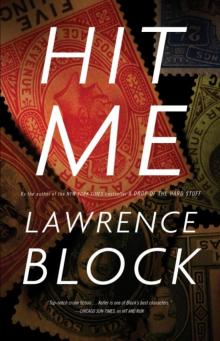 Hit and Run
Hit and Run Hope to Die
Hope to Die Two For Tanner
Two For Tanner Tanners Virgin
Tanners Virgin Dead Girl Blues
Dead Girl Blues One Night Stands and Lost Weekends
One Night Stands and Lost Weekends A Drop of the Hard Stuff
A Drop of the Hard Stuff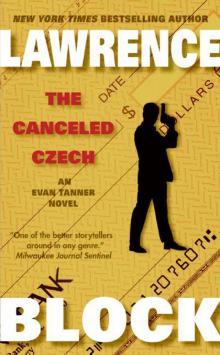 The Canceled Czech
The Canceled Czech Even the Wicked
Even the Wicked Me Tanner, You Jane
Me Tanner, You Jane Quotidian Keller
Quotidian Keller Small Town
Small Town Tanners Tiger
Tanners Tiger A Walk Among the Tombstones
A Walk Among the Tombstones Tanners Twelve Swingers
Tanners Twelve Swingers Gym Rat & the Murder Club
Gym Rat & the Murder Club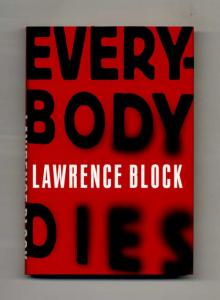 Everybody Dies
Everybody Dies The Thief Who Couldnt Sleep
The Thief Who Couldnt Sleep Hit Parade
Hit Parade The Devil Knows Youre Dead
The Devil Knows Youre Dead The Burglar in Short Order
The Burglar in Short Order A Long Line of Dead Men
A Long Line of Dead Men Keller's Homecoming
Keller's Homecoming Resume Speed
Resume Speed Keller's Adjustment
Keller's Adjustment Eight Million Ways to Die
Eight Million Ways to Die Time to Murder and Create
Time to Murder and Create Out on the Cutting Edge
Out on the Cutting Edge A Dance at the Slaughter House
A Dance at the Slaughter House In the Midst of Death
In the Midst of Death When the Sacred Ginmill Closes
When the Sacred Ginmill Closes You Could Call It Murder
You Could Call It Murder Keller on the Spot
Keller on the Spot A Ticket to the Boneyard
A Ticket to the Boneyard A Time to Scatter Stones
A Time to Scatter Stones Keller's Designated Hitter
Keller's Designated Hitter A Stab in the Dark
A Stab in the Dark Sins of the Fathers
Sins of the Fathers The Burglar in the Closet
The Burglar in the Closet Burglar Who Dropped In On Elvis
Burglar Who Dropped In On Elvis The Burglar Who Painted Like Mondrian
The Burglar Who Painted Like Mondrian The Girl With the Long Green Heart
The Girl With the Long Green Heart The Burglar Who Counted the Spoons (Bernie Rhodenbarr)
The Burglar Who Counted the Spoons (Bernie Rhodenbarr) Burglar Who Smelled Smoke
Burglar Who Smelled Smoke Rude Awakening (Kit Tolliver #2) (The Kit Tolliver Stories)
Rude Awakening (Kit Tolliver #2) (The Kit Tolliver Stories) Don't Get in the Car (Kit Tolliver #9) (The Kit Tolliver Stories)
Don't Get in the Car (Kit Tolliver #9) (The Kit Tolliver Stories) CH04 - The Topless Tulip Caper
CH04 - The Topless Tulip Caper You Can Call Me Lucky (Kit Tolliver #3) (The Kit Tolliver Stories)
You Can Call Me Lucky (Kit Tolliver #3) (The Kit Tolliver Stories) CH02 - Chip Harrison Scores Again
CH02 - Chip Harrison Scores Again Strangers on a Handball Court
Strangers on a Handball Court Cleveland in My Dreams
Cleveland in My Dreams Clean Slate (Kit Tolliver #4) (The Kit Tolliver Stories)
Clean Slate (Kit Tolliver #4) (The Kit Tolliver Stories) The Burglar Who Traded Ted Williams
The Burglar Who Traded Ted Williams Burglar on the Prowl
Burglar on the Prowl In For a Penny (A Story From the Dark Side)
In For a Penny (A Story From the Dark Side) Catch and Release Paperback
Catch and Release Paperback Ride A White Horse
Ride A White Horse No Score
No Score Looking for David (A Matthew Scudder Story Book 7)
Looking for David (A Matthew Scudder Story Book 7)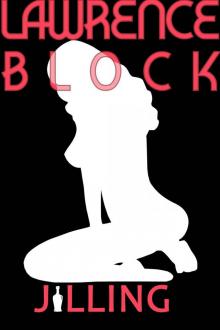 Jilling (Kit Tolliver #6) (The Kit Tolliver Stories)
Jilling (Kit Tolliver #6) (The Kit Tolliver Stories) Ariel
Ariel Enough Rope
Enough Rope Grifter's Game
Grifter's Game Canceled Czech
Canceled Czech Unfinished Business (Kit Tolliver #12) (The Kit Tolliver Stories)
Unfinished Business (Kit Tolliver #12) (The Kit Tolliver Stories) Thirty
Thirty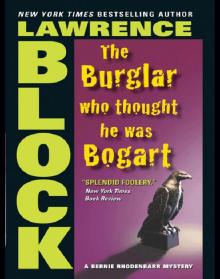 The Burglar Who Thought He Was Bogart
The Burglar Who Thought He Was Bogart Make Out with Murder
Make Out with Murder One Last Night at Grogan's (A Matthew Scudder Story Book 11)
One Last Night at Grogan's (A Matthew Scudder Story Book 11) The Burglar on the Prowl
The Burglar on the Prowl Welcome to the Real World (A Story From the Dark Side)
Welcome to the Real World (A Story From the Dark Side) Keller 05 - Hit Me
Keller 05 - Hit Me Walk Among the Tombstones: A Matthew Scudder Crime Novel
Walk Among the Tombstones: A Matthew Scudder Crime Novel Ronald Rabbit Is a Dirty Old Man
Ronald Rabbit Is a Dirty Old Man The Burglar Who Studied Spinoza
The Burglar Who Studied Spinoza The Burglar Who Liked to Quote Kipling
The Burglar Who Liked to Quote Kipling Keller in Des Moines
Keller in Des Moines Hit List
Hit List The Dettweiler Solution
The Dettweiler Solution HCC 115 - Borderline
HCC 115 - Borderline A Drop of the Hard Stuff: A Matthew Scudder Novel
A Drop of the Hard Stuff: A Matthew Scudder Novel Step by Step
Step by Step The Girl With the Deep Blue Eyes
The Girl With the Deep Blue Eyes If You Can't Stand the Heat (Kit Tolliver #1) (The Kit Tolliver Stories)
If You Can't Stand the Heat (Kit Tolliver #1) (The Kit Tolliver Stories) The Topless Tulip Caper
The Topless Tulip Caper Dolly's Trash & Treasures (A Story From the Dark Side)
Dolly's Trash & Treasures (A Story From the Dark Side) The Triumph of Evil
The Triumph of Evil Fun with Brady and Angelica (Kit Tolliver #10 (The Kit Tolliver Stories)
Fun with Brady and Angelica (Kit Tolliver #10 (The Kit Tolliver Stories) Burglars Can't Be Choosers
Burglars Can't Be Choosers Who Knows Where It Goes (A Story From the Dark Side)
Who Knows Where It Goes (A Story From the Dark Side) Deadly Honeymoon
Deadly Honeymoon Like a Bone in the Throat (A Story From the Dark Side)
Like a Bone in the Throat (A Story From the Dark Side) A Chance to Get Even (A Story From the Dark Side)
A Chance to Get Even (A Story From the Dark Side) The Boy Who Disappeared Clouds
The Boy Who Disappeared Clouds Collecting Ackermans
Collecting Ackermans Waitress Wanted (Kit Tolliver #5) (The Kit Tolliver Stories)
Waitress Wanted (Kit Tolliver #5) (The Kit Tolliver Stories) One Thousand Dollars a Word
One Thousand Dollars a Word Even the Wicked: A Matthew Scudder Novel (Matthew Scudder Mysteries)
Even the Wicked: A Matthew Scudder Novel (Matthew Scudder Mysteries) Hit Man
Hit Man The Night and The Music
The Night and The Music Ehrengraf for the Defense
Ehrengraf for the Defense The Merciful Angel of Death (A Matthew Scudder Story Book 5)
The Merciful Angel of Death (A Matthew Scudder Story Book 5) The Burglar in the Rye
The Burglar in the Rye I Know How to Pick 'Em
I Know How to Pick 'Em Getting Off hcc-69
Getting Off hcc-69 Three in the Side Pocket (A Story From the Dark Side)
Three in the Side Pocket (A Story From the Dark Side)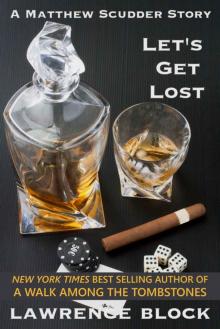 Let's Get Lost (A Matthew Scudder Story Book 8)
Let's Get Lost (A Matthew Scudder Story Book 8) Strange Are the Ways of Love
Strange Are the Ways of Love MOSTLY MURDER: Till Death: a mystery anthology
MOSTLY MURDER: Till Death: a mystery anthology Masters of Noir: Volume Four
Masters of Noir: Volume Four A Week as Andrea Benstock
A Week as Andrea Benstock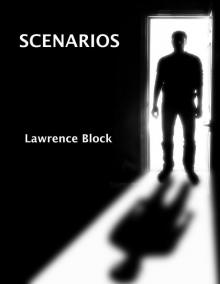 Scenarios (A Stoiry From the Dark Side)
Scenarios (A Stoiry From the Dark Side) The Sex Therapists: What They Can Do and How They Do It (John Warren Wells on Sexual Behavior Book 15)
The Sex Therapists: What They Can Do and How They Do It (John Warren Wells on Sexual Behavior Book 15)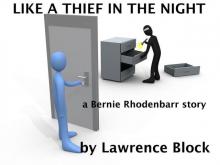 Like a Thief in the Night: a Bernie Rhodenbarr story
Like a Thief in the Night: a Bernie Rhodenbarr story A Diet of Treacle
A Diet of Treacle Community of Women
Community of Women Different Strokes: How I (Gulp!) Wrote, Directed, and Starred in an X-rated Movie (John Warren Wells on Sexual Behavior)
Different Strokes: How I (Gulp!) Wrote, Directed, and Starred in an X-rated Movie (John Warren Wells on Sexual Behavior) You Don't Even Feel It (A Story From the Dark Side)
You Don't Even Feel It (A Story From the Dark Side) Zeroing In (Kit Tolliver #11) (The Kit Tolliver Stories)
Zeroing In (Kit Tolliver #11) (The Kit Tolliver Stories) The Wife-Swap Report (John Warren Wells on Sexual Behavior)
The Wife-Swap Report (John Warren Wells on Sexual Behavior) Keller's Fedora (Kindle Single)
Keller's Fedora (Kindle Single) Speaking of Lust
Speaking of Lust Everybody Dies (Matthew Scudder)
Everybody Dies (Matthew Scudder) Defender of the Innocent: The Casebook of Martin Ehrengraf
Defender of the Innocent: The Casebook of Martin Ehrengraf After the First Death
After the First Death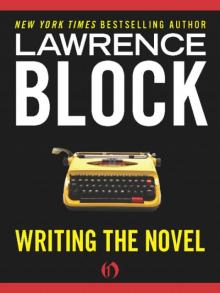 Writing the Novel
Writing the Novel How Far - a one-act stage play
How Far - a one-act stage play Chip Harrison Scores Again
Chip Harrison Scores Again The Topless Tulip Caper ch-4
The Topless Tulip Caper ch-4 The Crime of Our Lives
The Crime of Our Lives Killing Castro
Killing Castro The Trouble with Eden
The Trouble with Eden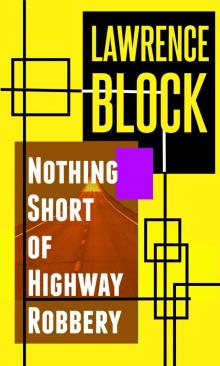 Nothing Short of Highway Robbery
Nothing Short of Highway Robbery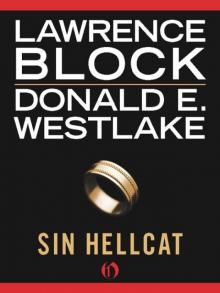 Sin Hellcat
Sin Hellcat Getting Off: A Novel of Sex & Violence (Hard Case Crime)
Getting Off: A Novel of Sex & Violence (Hard Case Crime) Coward's Kiss
Coward's Kiss Alive in Shape and Color
Alive in Shape and Color Blow for Freedom
Blow for Freedom The New Sexual Underground: Crossing the Last Boundaries (John Warren Wells on Sexual Behavior Book 10)
The New Sexual Underground: Crossing the Last Boundaries (John Warren Wells on Sexual Behavior Book 10) April North
April North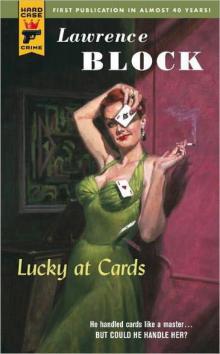 Lucky at Cards
Lucky at Cards One Night Stands; Lost weekends
One Night Stands; Lost weekends Sweet Little Hands (A Story From the Dark Side)
Sweet Little Hands (A Story From the Dark Side) Blood on Their Hands
Blood on Their Hands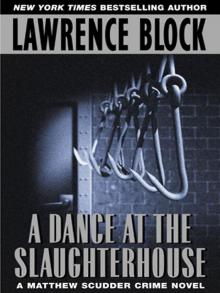 A Dance at the Slaughterhouse
A Dance at the Slaughterhouse Headaches and Bad Dreams (A Story From the Dark Side)
Headaches and Bad Dreams (A Story From the Dark Side) Keller's Therapy
Keller's Therapy The Specialists
The Specialists Hit and Run jk-4
Hit and Run jk-4 Threesome
Threesome Love at a Tender Age (John Warren Wells on Sexual Behavior)
Love at a Tender Age (John Warren Wells on Sexual Behavior) The Devil Knows You're Dead: A MATTHEW SCUDDER CRIME NOVEL
The Devil Knows You're Dead: A MATTHEW SCUDDER CRIME NOVEL Funny You Should Ask
Funny You Should Ask CH01 - No Score
CH01 - No Score Sex and the Stewardess (John Warren Wells on Sexual Behavior)
Sex and the Stewardess (John Warren Wells on Sexual Behavior) A Madwoman's Diary
A Madwoman's Diary When This Man Dies
When This Man Dies Sinner Man
Sinner Man Such Men Are Dangerous
Such Men Are Dangerous A Strange Kind of Love
A Strange Kind of Love Enough of Sorrow
Enough of Sorrow 69 Barrow Street
69 Barrow Street A Moment of Wrong Thinking (Matthew Scudder Mysteries Series Book 9)
A Moment of Wrong Thinking (Matthew Scudder Mysteries Series Book 9) Eight Million Ways to Die ms-5
Eight Million Ways to Die ms-5 Warm and Willing
Warm and Willing Mona
Mona In Sunlight or In Shadow
In Sunlight or In Shadow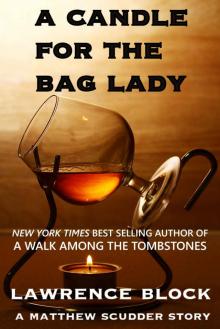 A Candle for the Bag Lady (Matthew Scudder Book 2)
A Candle for the Bag Lady (Matthew Scudder Book 2) Conjugal Rites (Kit Tolliver #7) (The Kit Tolliver Stories)
Conjugal Rites (Kit Tolliver #7) (The Kit Tolliver Stories) Speaking of Lust - the novella
Speaking of Lust - the novella Gigolo Johnny Wells
Gigolo Johnny Wells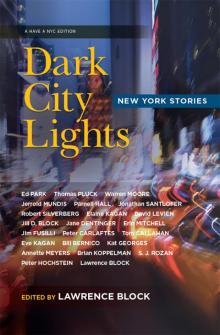 Dark City Lights
Dark City Lights Versatile Ladies: the bisexual option (John Warren Wells on Sexual Behavior)
Versatile Ladies: the bisexual option (John Warren Wells on Sexual Behavior) Passport to Peril
Passport to Peril The Taboo Breakers: Shock Troops of the Sexual Revolution (John Warren Wells on Sexual Behavior)
The Taboo Breakers: Shock Troops of the Sexual Revolution (John Warren Wells on Sexual Behavior) Lucky at Cards hcc-28
Lucky at Cards hcc-28 Campus Tramp
Campus Tramp 3 is Not a Crowd (John Warren Wells on Sexual Behavior)
3 is Not a Crowd (John Warren Wells on Sexual Behavior)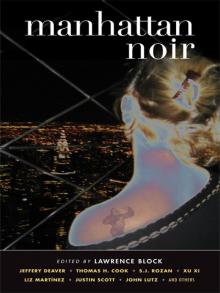 Manhattan Noir
Manhattan Noir The Burglar in the Library
The Burglar in the Library Doing It! - Going Beyond the Sexual Revolution (John Warren Wells on Sexual Behavior Book 13)
Doing It! - Going Beyond the Sexual Revolution (John Warren Wells on Sexual Behavior Book 13) So Willing
So Willing The Burglar Who Traded Ted Williams br-6
The Burglar Who Traded Ted Williams br-6 Candy
Candy Sex Without Strings: A Handbook for Consenting Adults (John Warren Wells on Sexual Behavior)
Sex Without Strings: A Handbook for Consenting Adults (John Warren Wells on Sexual Behavior) The Devil Knows You're Dead: A MATTHEW SCUDDER CRIME NOVEL (Matthew Scudder Mysteries)
The Devil Knows You're Dead: A MATTHEW SCUDDER CRIME NOVEL (Matthew Scudder Mysteries) Manhattan Noir 2
Manhattan Noir 2 The Scoreless Thai (aka Two For Tanner)
The Scoreless Thai (aka Two For Tanner)